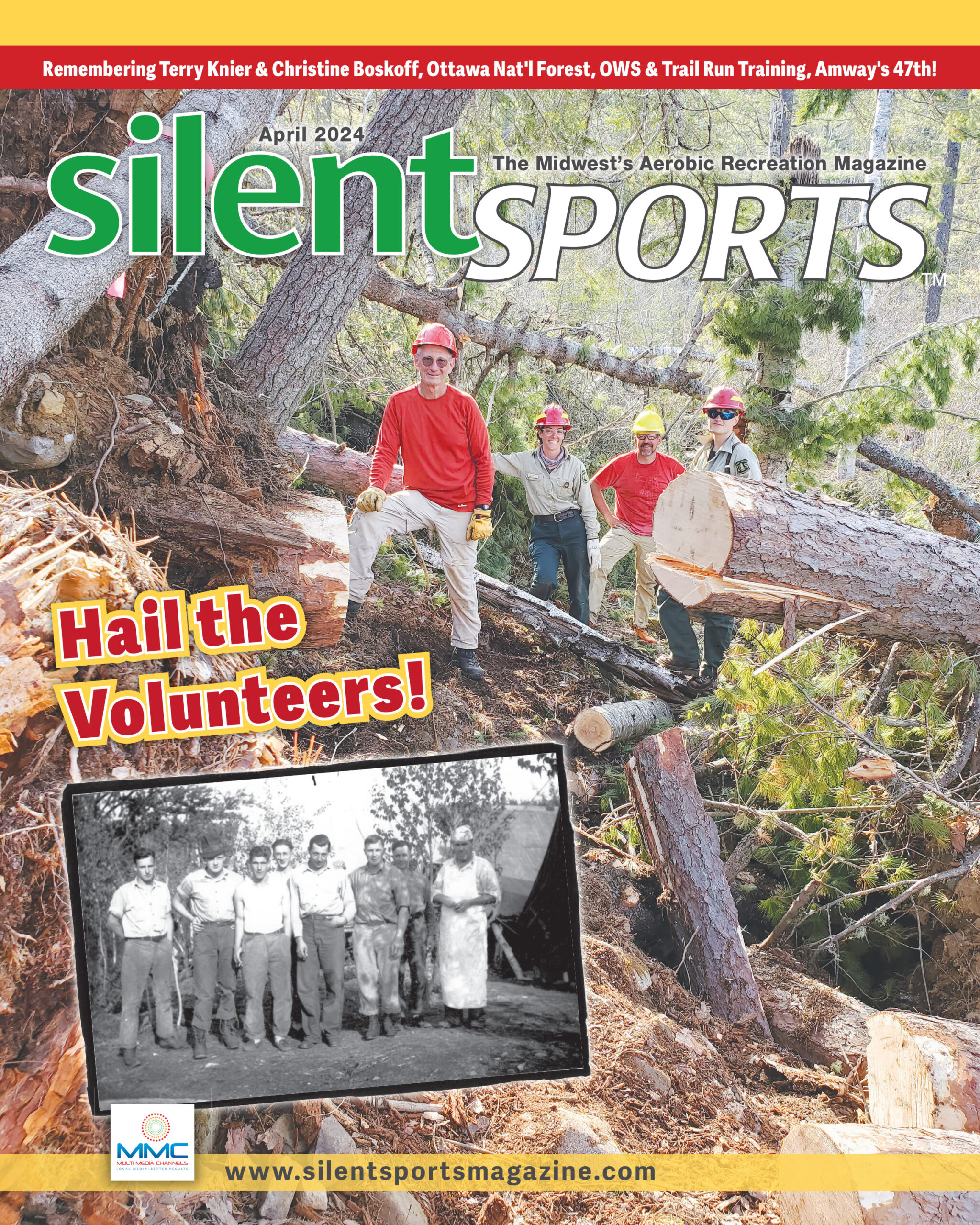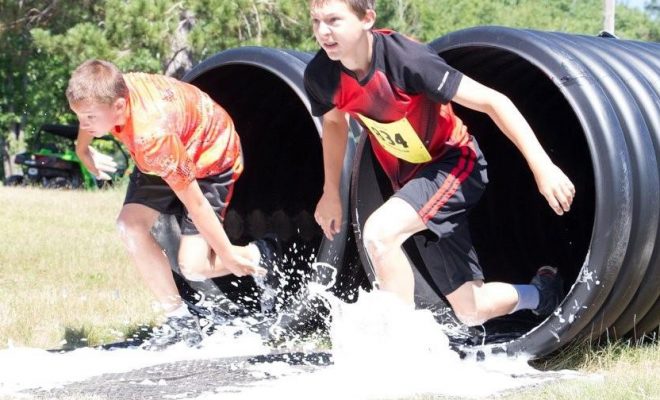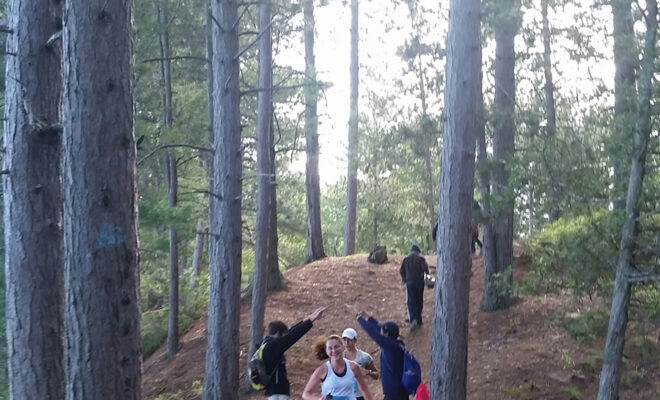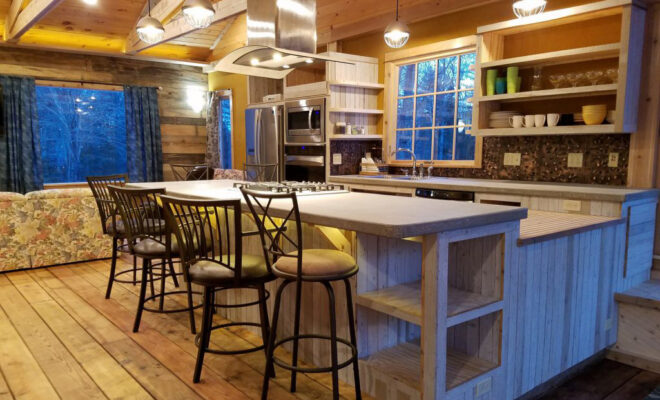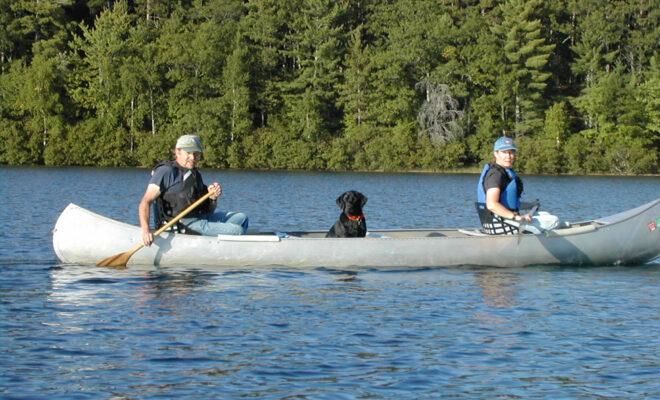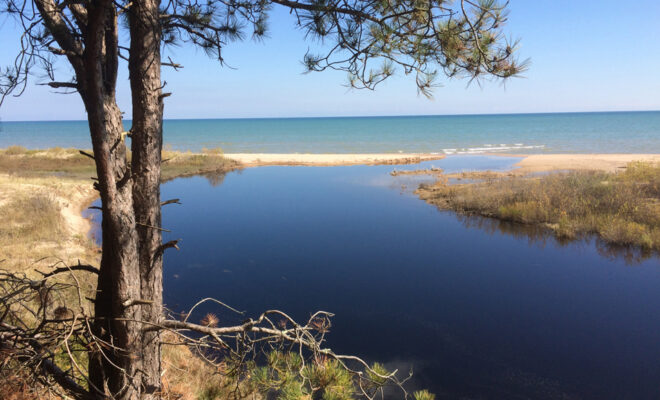Destination: Midwest National Parks and Lakeshores
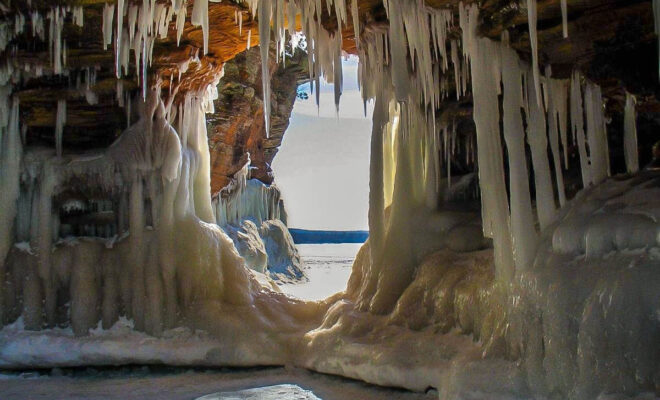
By Michael McFadzen
Sleeping Bear Dunes National Lakeshore
Note: No Website Paywall so read this must-read article and then share it to 20,000 of
your closest friends & walk around the site for a while longer!
Click on any of the photos to enlarge & be amazed!

Sleeping Bear Dunes is a way-station for the annual Monarch butterfly migration. Hundreds of Monarchs were clinging to shoreline trees.
From atop the precipice, giving us a panoramic view of the massive Sleeping Bears Dunes landform, my sister, Becky, said, “Are those people or ants down there? That’s a heck of a climb to get back up.” Several people joined us to watch the ant-sized people struggle up the giant dune, sliding backward, often sinking. “Are you going to try?”
I declined her dare when a nearby Gen-Xer couple challenged each other. Off they went, sliding down the steep dune to the Lake Michigan shoreline. We bumped into the sweaty and sandy couple later that day. They said it was worth it, taking 10 minutes to get down, but 45 minutes to crawl back up.
Located in northwest Michigan, Sleeping Bear Dunes National Lakeshore is Michigan’s most popular park, with almost 2 million visitors in 2019. The most prominent features are the spectacular headlands towering above Lake Michigan, presenting gorgeous shoreline views. Imagine this—65 miles of Lake Michigan shoreline, with numerous lakes and streams, offering a hiker/paddler-destination paradise. The park covers 75,000 acres, and offers over 250 campsites as well as 100 miles of designated trails. Many trails are maintained for cross-country skiing in winter. Want to really get away? Paddle or take the ferry to North or South Manitou Island and get lost in an island wilderness; prime backpacking solitude.
With few other hikers seen during a late August trip, we were awed by thousands of Monarch butterflies clinging to shoreline trees. Sleeping Bear Dunes is a waystation for the annual Monarch migration from Canada to the Sierra Madre Mountains of Mexico. The Monarch is the only butterfly to make this distant, two-way migration.

Wall cloud approaching the Cornucopia Town Beach. We had time for a quick swim following a terrific kayak trip before this storm hit.
National Park System
The National Park System (NPS) encompasses 419 units, including 62 formal parks, 3 lakeshores, 83 monuments, 19 preserves, 15 recreation areas, 10 seashores, 3 national trails, and several other cultural/historic designations. Only 3 trails receive the national trail designation, and we are lucky to have two of them in the Midwest. The Ice Age Scenic Trail traverses Wisconsin, and the North County Trail travels from New York to North Dakota, including Michigan, Wisconsin, and Minnesota.
“The 419 parks in the national park system provide a vast array of opportunities for recreation and inspiration for visitors of all ages,” said David Vela, a National Park Service Deputy Director. “With at least one located in every state, national parks offer nearby history, culture, and adventure.”
More than 327 million people visited the NPS in 2019.
National Lakeshores
All three National Lakeshores are located in the Midwest and are operated by the National Park Service.
The Apostle Islands National Lakeshore is about as far north as you can get in the Midwest without bumping into Canada. The spectacular Lakeshore contains 22 islands and 155 miles of shoreline on the northern tip of Wisconsin, jutting into Lake Superior. My wife and I recently kayaked the gorgeous mainland sea caves from Meyers Beach near Cornucopia WI. It is best to take a guided tour unless you are a highly skilled paddler. I recommend this incredible trip to anyone who will listen. Paddling the azure Lake Superior waters to view the gorgeous sandstone sea caves is a key draw. Other activities include scuba diving the many boat wrecks, checking out old growth forest remnants, hiking 62 miles of trails, and visiting the 9 lighthouses, the most at any National Park.
There are also 10 historical sites, 52 archaeological sites, 12 shipwrecks, and 3 historical resorts. Due to its remote location, Lakeshore has 22 photovoltaic systems powering an array of necessary equipment. High lake levels and recent storm damage have forced closure of some docks and campsites.
In winter, a visit to the shoreline sea caves is a must-do winter activity. Frozen waterfalls glow a myriad of colors based on mineral content. Cavernous ice-filled chambers display a palette of colorful hues, changing through daylight and reflections. Freezing meltwater forms forty-foot icicles, highlighting gorgeous ice formations throughout. You’ll hear yourself saying “Wow,” over and over again. Over 120,000 visitors made the jaunt to explore this winter-wonderland in 2014 when national media played it up, but it has been since 2015 when the ice was safe enough to provide passage.
Pictured Rocks

Miles of sand beach are intermixed with towering cliffs at Pictured Rocks. Most beaches are dog friendly.
Within 72,000 acres of managed preserve, sandstone cliffs towering 300-plus feet above Lake Superior’s pristine blue-green waters, Pictured Rocks offers over 40 miles of protected shoreline to explore. Kayaking is a big draw with several outfitters offering rentals and day trips. Hiking is also spectacular, my favorite path being a 10-mile loop from Chapel Road. This loop connects with the North County Trail, which puts you atop cliffs hundreds of feet above Lake Superior, giving views of dazzling rock formations including Miner’s Castle and Grand Portal.
In winter, sea caves become ice caves while waterfalls freeze into climbable curtained formations. You can view these outstanding formations from Sand Point Road near Munising. MI.
Midwest National Parks
Voyageurs National Park, located in northern Minnesota on the Canadian border near the town of International Falls, is an outstanding water resource featuring many lakes popular with boaters and paddlers. The Kabetogama Peninsula is the central feature, surrounded by Rainy, Namakan, and Kabetogama lakes.
Think Boundary Waters but with motorboats.
Don’t miss Grassy Bay cliffs, which rise 125 feet above Sand Point Lake. This area highlights the incredible scenery and interconnected waterways on the eastern side of the park next to the Boundary Waters. Voyageurs’ name commemorates the French traders and Indians voyageurs who traveled the area in the early 1800s.
Isle Royale National Park

Kayakers exploring the Apostle Islands rock formations. Several companies, including longstanding vendor Trek and Trail, offer full and half day trips.
Comprised of Isle Royale and approximately 450 adjacent islands in the northwest portion of Lake Superior, spanning over 132,000 acres, Isle Royale National Park’s remoteness is the draw. Established as a National Park in 1976, further protected as a UNESCO International Biosphere Reserve in 1980, the isolated location is served via ferry service from Copper Harbor and Houghton Michigan. Or, you can shell out big bucks for a scenic seaplane flight from Houghton.
Backpacking is popular on this island park, which is 45 miles long, 10 miles wide, with numerous lakes and streams and varied topography. “This is the ultimate no-fluff cross-country recreational opportunity,” according to Michigan adventurer Tom Asmus, who has backpacked the island several times. “With its rugged terrain and endless hiking, canoeing, and kayaking, only insects and cumbersome access keep the crowds at bay.”
Other than a small lodge, campground, information center, and several boat docks, facilities are limited. Stable populations of moose and wolves roam the island with no permanent human residents to bother them.
Indiana Dunes National Park
Smallish by comparison, at 15,000 acres, Indiana Dunes National Park still contains 15 miles of Lake Michigan shoreline. Hiking is the primary draw. Visitors enjoy sand dunes, rivers, and several forest stands.
The park has 15 separate units, including Indiana Dunes State Park. Although Gary, Indiana, spans the western park border, this park is a welcome refuge for visitors from the Chicago industrial corridor.
At all lakeshore parks, safety is critical. Be mindful that storms can sneak up quickly, with Lakes Superior and Michigan claiming its share of unprepared boaters.
Park staff has responded to many rescues where kayakers were ill-equipped or ill-informed. Even experienced paddlers have been overpowered by the lake.
Be prepared, and don’t let overconfidence risk any adventure.
∼
Midwest National Parks: Where and How
These incredible parks are day trips from anywhere in the Midwest. You can enjoy Pictured Rocks and Sleeping Bear together by taking a circle loop via the Manitowoc or Milwaukee ferry.

The National Lakeshores are well-known for incredible winter ice formations. Frozen waterfalls and columns take on different hues based on mineral content and lighting. Photo taken at the Apostle Islands.
APOSTLE ISLANDS: I love the little towns of Bayfield, Washburn, LaPointe, Cornucopia, and Ashland. There isn’t much COVID-19 up here and locals want to keep it that way; masking is required almost everywhere. Washburn has two 5-star establishments. Stop at Coco’s for the best pastries and artisan breads you will find almost anywhere. DaLou’s Bistro has terrific Italian food. Load up on fresh whitefish at $9 pound from Bodins Commercial Fishery. Like beer? Got you covered with the Bayfield Brewing Company and Ashland’s South Shore Brewery. South Shore gots game as it partners with the Deep Water Grille in the historic Willmarth Building. I’m partial to the mid-tier Gruenkes and Maggies for grilled whitefish or a burger and soup.
We had a great experience with longstanding provider Trek & Trail. Guides Shelby and Nick did wonderful work getting us in close and deep. Top-ranked accommodations include Seagull Bay, Washburn Inn, Bayfield Inn, and the Rittenhouse B&B. The Hotel Chequamegon has a spectacular setting on Lake Superior. We stayed at the dog-friendly Andrew Tate Condos (www.apostlerentals.com) in Bayfield. If you enjoy fresh fish, Bodins Commercial Fishery is a must. Like beer? Got you covered with the Bayfield Brewing Company and Ashland’s South Shore Brewery. South Shore partners with the Deep Water Grille in the historic Willmarth Building. Top-rated restaurants include the Copper Trout and Old Rittenhouse Inn, but I’m partial to the mid-tier Gruenkes and Maggies for grilled whitefish or a burger and soup. Didn’t bring your boat? Rent a kayak or tour with longstanding provider Trek & Trail. Or hop the Bayfield Ferry to visit Madeline Island, which is a tourist draw and the only Apostle island with year-around residents.
Don’t miss Big Bay State Park to hike the gorgeous boulder-strewn Lake Superior Trail. Talking winter again, it’s fun to take the Ice Road from Bayfield to Madeline Island. Or better yet, take the covered airboat, Windsled, which travels on ice or floats when the ice breaks down. See for yourself at: www.youtube.com/watch?v=EKZFRWYsXBw
PICTURED ROCKS: Munising is the headquarters for exploring these parts. Kayaking or a boat tour is the best way to view the spectacular seashore. Check out Glass Bottom Shipwreck Tours, where Captain Kate provides an unforgettable scenic experience. (www.shipwrecktours.com.) Favorite restaurants include the Falling Rock Café, which offers great sandwiches, soups, home-roasted coffee, with a cool little bookstore. The Falling Rock also offers periodic entertainment. For a true gourmet dining experience, visit Tracey’s at The Roam Inn. My wife, Karen, enjoyed the quinoa bowl with blackened whitefish, while I feasted on the 5-star chicken pot pie. The whitefish chowder is to die for. Roam also offers high-end lodging. Make sure you walk around the place to view the excellent photography displayed throughout. Another good lodging option is the Holiday Inn Express, which offers Lake Superior views. Thirsty? The East Channel Brewery serves a variety of craft beers including my favorite, Old Tru’s.
GRAND ISLAND: No visit to the area is complete without a peak at Grand Island. This recreational paradise is located 1 mile from Munising and features spectacular rock formations, sandy beaches, and great trails for biking and hiking. This might be the most scenic run in the Midwest.

